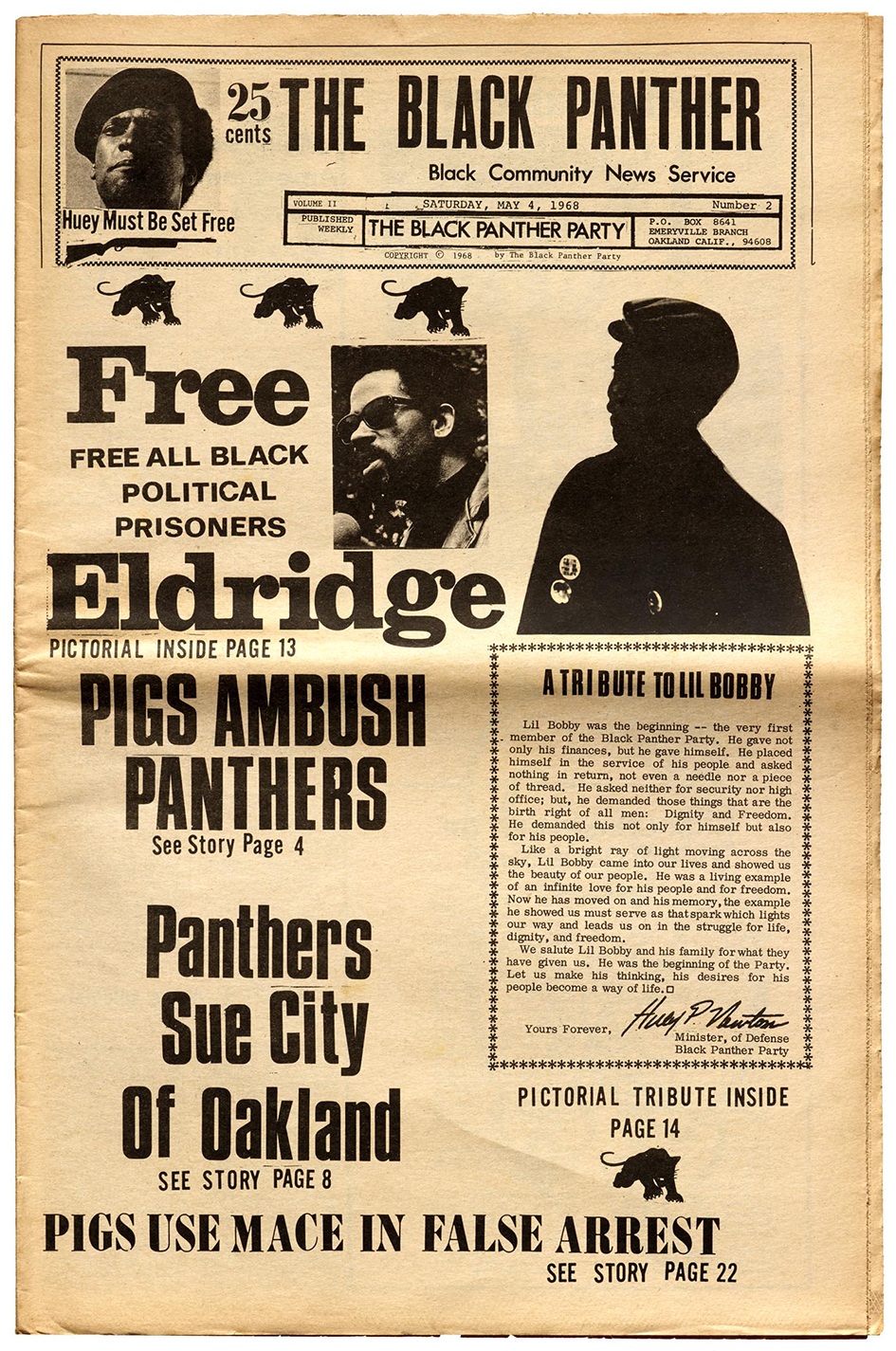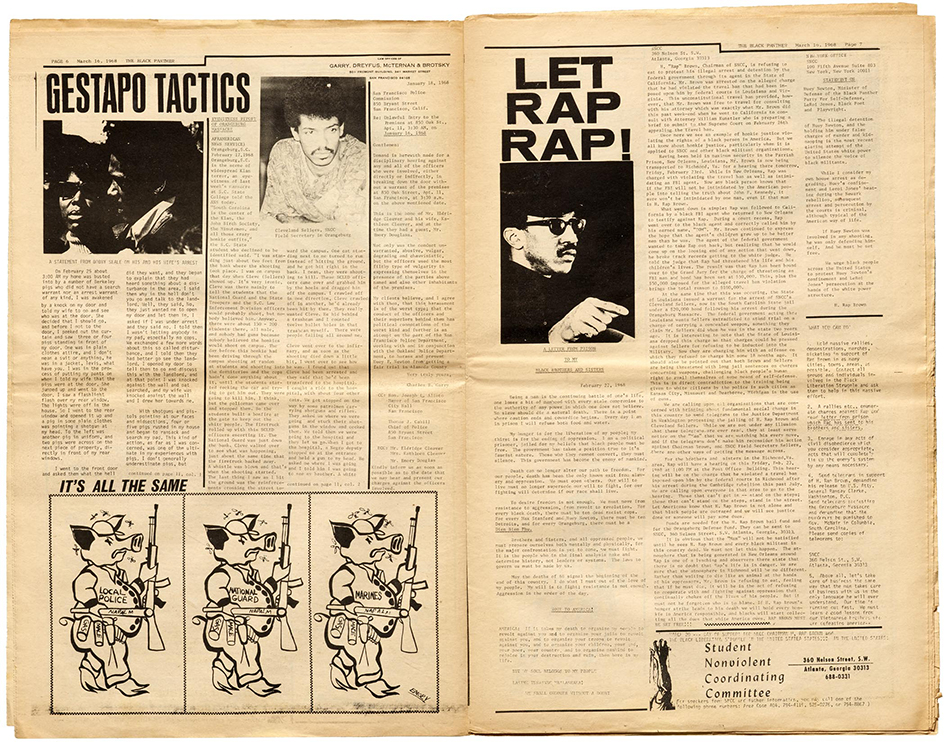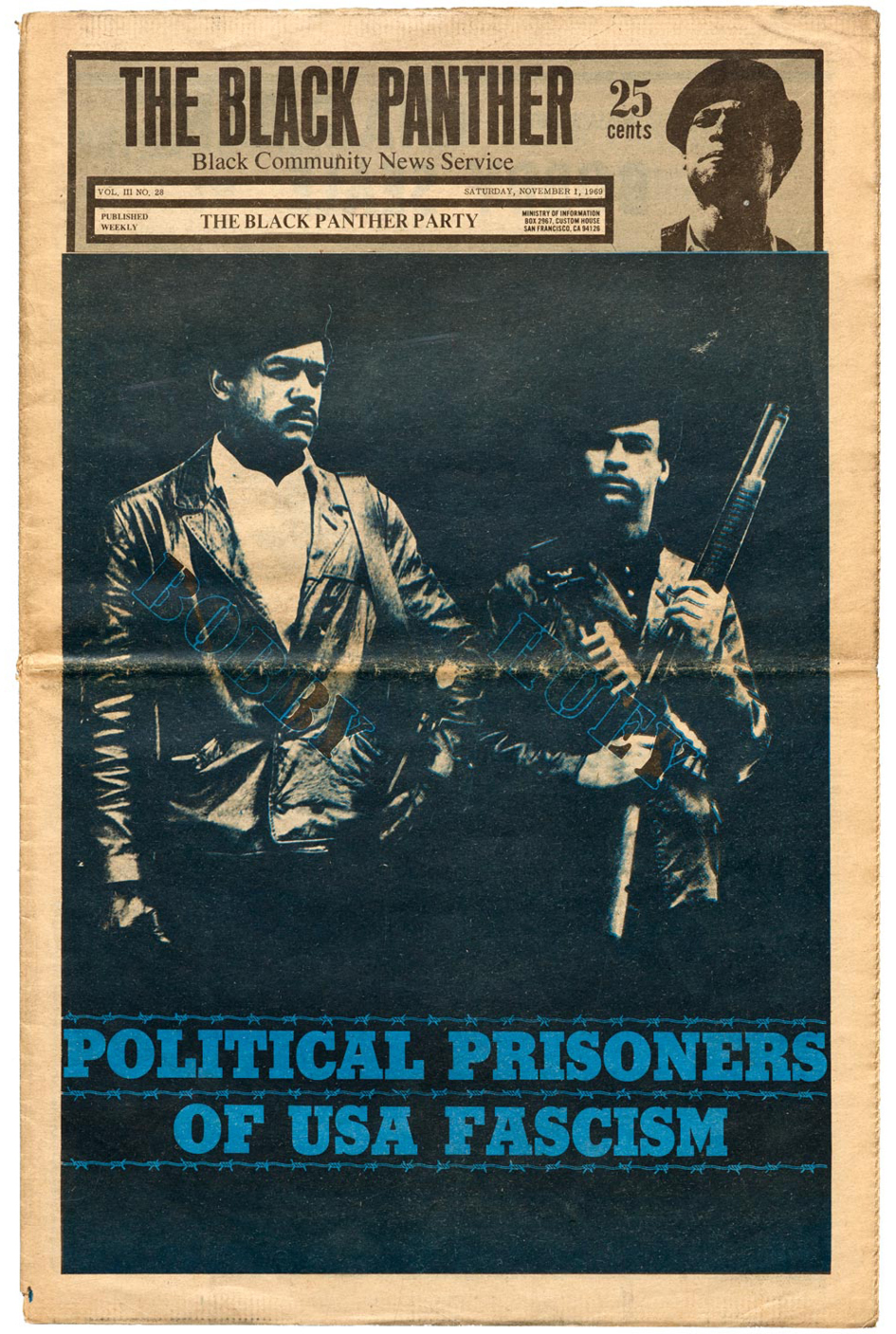A Black Panther roars in paper: the revolutionary art of Emory Douglas
Letterform Archive, the nonprofit center for inspiration, education, publishing, and community which was founded by Rob Saunders, a collector of the letter arts for over 40 years, as a place to share his private collection with the public and is offering hands-on access to a curated collection of over 40,000 items related to lettering, typography, calligraphy, and graphic design, spanning 2,000 years of history since 2015 is thrilled. The reason? LA recently acquired 121 issues of The Black Panther from its seminal period between 1967–72, along with posters and other ephemera by Emory Douglas.
“Recognized for his fearless and powerful use of graphic design in the Black Panther party’s struggle for civil rights and against racism, oppression, and social injustice” Douglas is a prominent figure in activism through art.
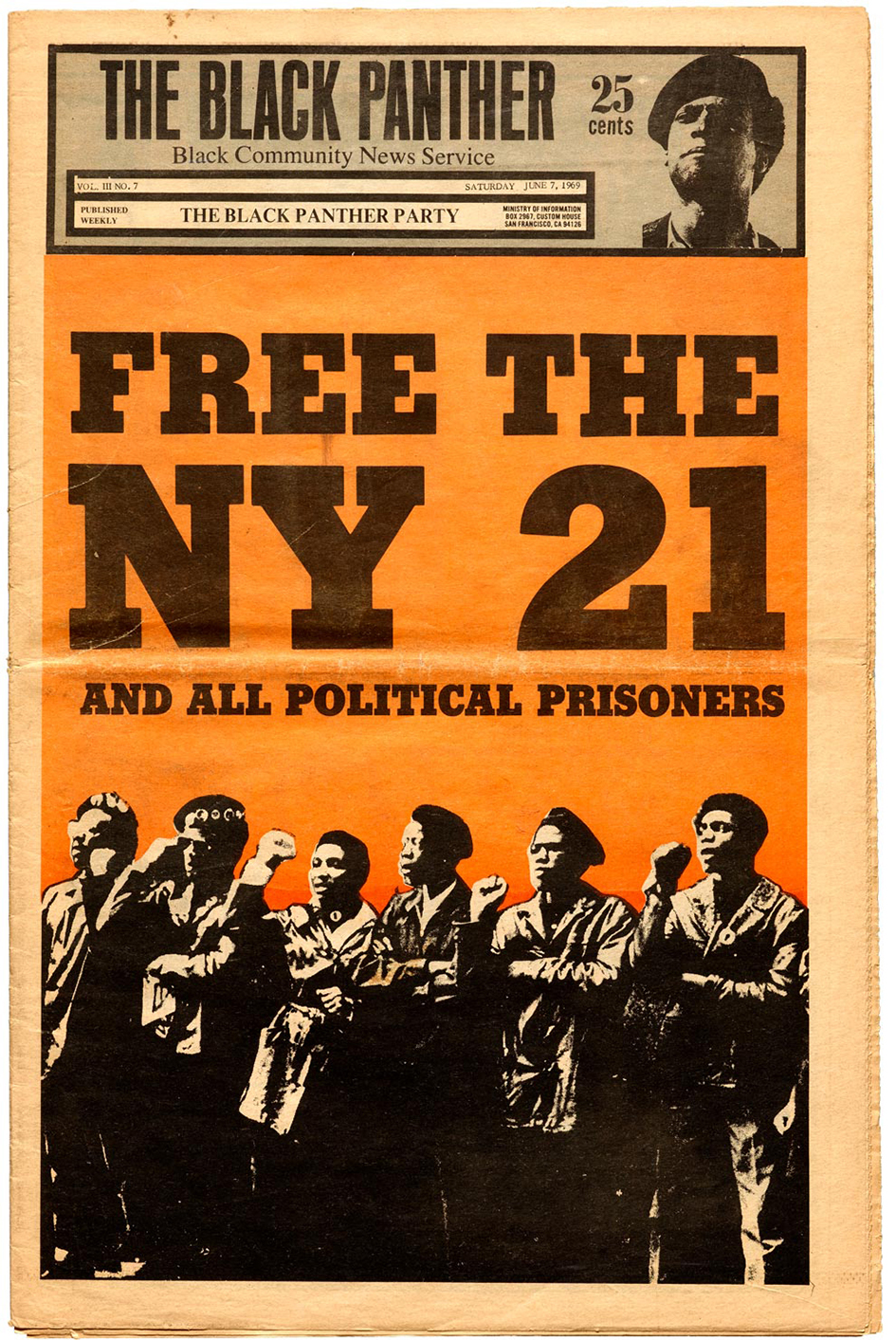
“As the revolutionary artist and minister of culture for the Black Panthers from 1967 to the early 1980s, Douglas and his fellow party members endured acts of sabotage by the FBI. According to a congressional report, those acts included spraying production equipment with synthetic fecal scents, ransacking offices, and destroying shipments of newspapers that featured Douglas’ controversial graphics. What did the government have to fear from Douglas’ work? His ability to provoke” notes AIGA. “The visual messages Douglas helped to propagate through the Black Panther Party’s media outlets unnerved many who had already been made anxious by the climate of unrest and revolution, and the perceived danger of his images is a testament to their potency”.
“I was using very basic materials, like rub-off type and markers, and applying what I had learned. It felt good to be contributing” says Douglas who launched the official newspaper aptly named The Black Panther.
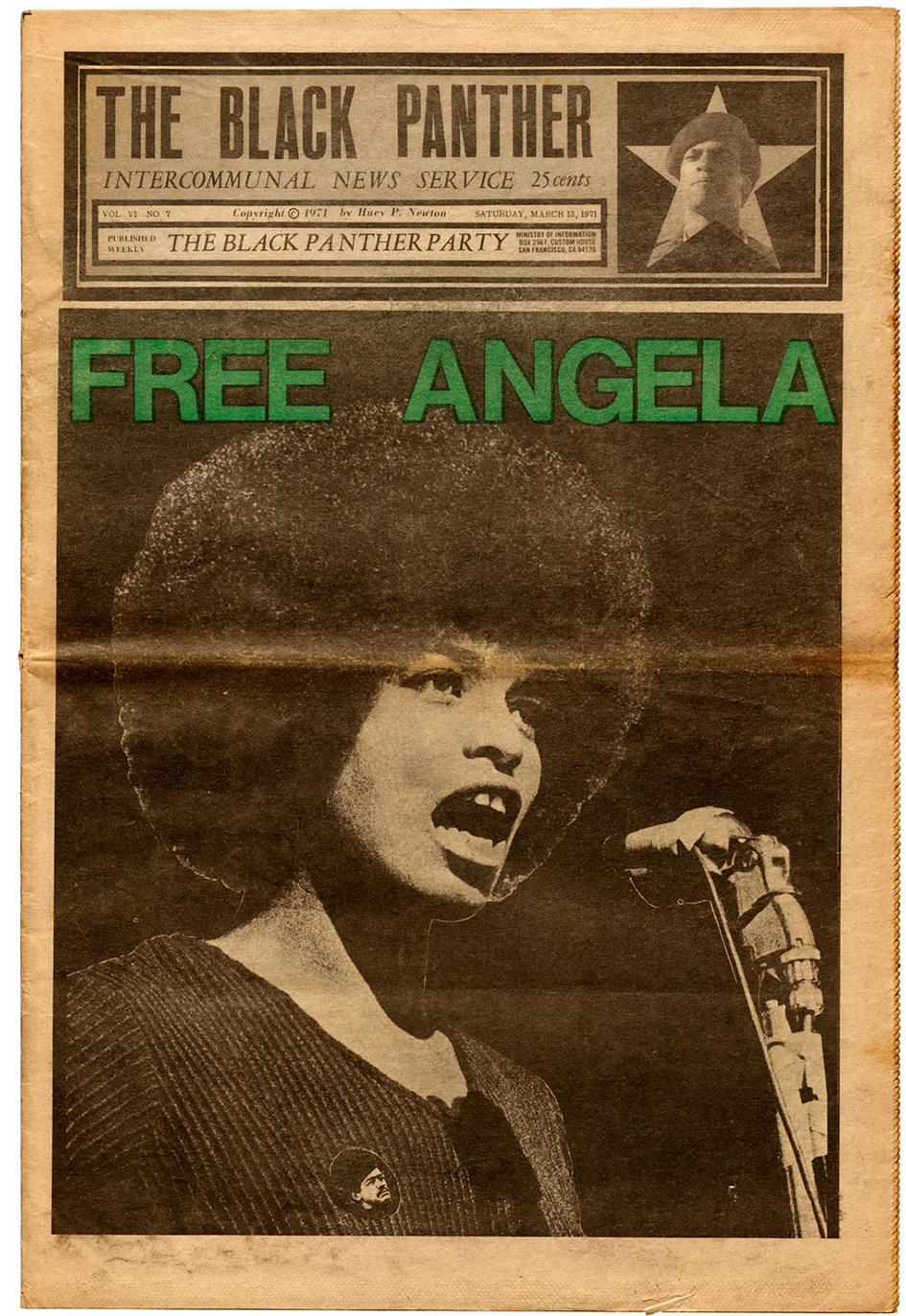
“For Douglas, his work for the Black Panther Party was only the beginning of a lifelong devotion to making art for causes he supports. He kept up his attacks on racism, greed, and the prison system long after the party dissolved in the early ’80s due to government persecution as well as its own internal conflicts. With renewed interest in the tumult that defined the latter half of the 20th century, a younger generation of political artists has now discovered Douglas’ work, further evidence that the pulse it carried more than three decades ago still beats strongly today” notes AIGA.
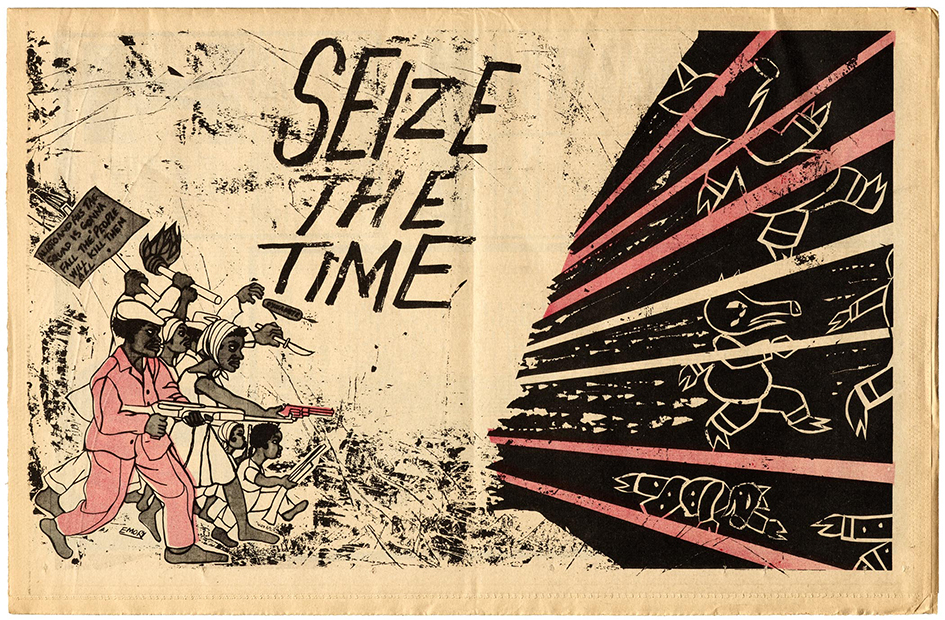
“Initially, wherever we were set up, [usually someone’s home], that would be our production area” says Douglas. “We used regular tables, regular lights, Elmer’s glue, rubber cement. We cut and pasted. We made up our own layout sheets. Non-repro blue markers. A lot of it was done on [an IBM Selectric] typewriter. We knew some folks in the publishing business, so every now and then we could get them to typeset the galleys. But we used pre-fabricated instant type that came on sheets from Formatt [a Letraset alternative]. It was economical, but it was also the best one because it had a line underneath the alphabet so you could set words without having to rub the letters off.”
In 2015 Douglas was awarded an AIGA Medal. The organization recognized him for “his fearless and powerful use of graphic design in the struggle for civil rights”.
Check the collection here.
Tags/ typography, graphic design, origins, calligraphy, lettering, newspaper, aiga, letterform archive, rob saunders, aiga medal, the black panther, emory douglas, formatt, ibm selectric, black panther party

